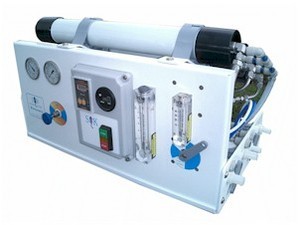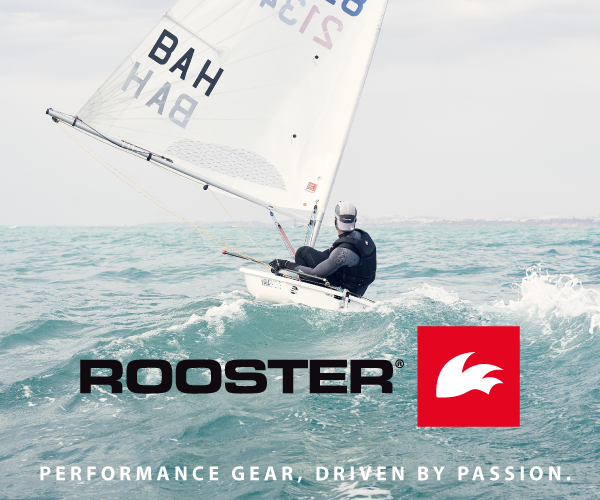Understanding your Watermaker
by Mike Hobson, Myboatsgear.com/Sail-World Cruising on 22 Apr 2008

Large or small they all work the same SW
It's probably easier than understanding your spouse. At least there are just a few simple elements to this magic metamorphism, and once you 'get' these, you'll be able to maintain, troubleshoot or plan a new watermaker more successfully. (Sorry, we can't offer a similar process for human relationships)
A typical marine watermaker installation involves:
1. A seawater supply,
2. Preliminary filtration to remove weeds and large contaminants,
3. A low pressure pump to push the water through the particle filter which remove particles down to 5 microns,
4. A high pressure pump to supply the RO membrane.
Fresh water from the membrane is then sent to the water tank.
For every gallon of fresh water produced roughly 10 gallons is required to pass through the membrane, the remainder goes overboard in the form of brine.
Hose runs should be minimal especially in low energy systems.
Thru hull:
It is important to have good water flow through the thru hull fitting, by having a forward facing scoop type 3/4 inch thru hull as low as possible in the boat. Any air getting in the system will need bleeding. The intake should not be near heads or grey water outlets.
Strainer:
A typical strainer will remove large to medium size debris that comes in with the sea water. The strainer needs to be inspected so it needs to be accessible. Do not install near electrical equipment as water can spill during strainer cleaning.
Low Pressure Pump:
The low-pressure feed pump for water is to ensure that the high-pressure pump is always supplied with an adequate flow of water. It should also be mounted low in the boat.
Particle Filters:
The raw water-supply system must remove any particulate matter that could damage the high-pressure pump. Most systems use two filters, which are fitted with progressively finer filter elements. 30 micron and 5 micron filters are typical. The performance of the RO membrane can be degraded by oil, so many systems also include a separate oil-elimination filter.
High Pressure Pump:
This pump needs to build up the pressure to around 800 psi to push the water through the membranes. The pump requires a lot of power to produce the 800 plus psi.
Two different types of pumps are used in sailboat RO systems: electric-motor-driven plunger pumps similar to those used in pressure washers, but marinised, and hydraulic amplifiers, pumps that amplify relatively low-pressure seawater and obtain the 800 plus psi pressure required for successful RO operation.
It appears plunger pumps are popular for watermakers. Spectra and SeaRecovery use these type of pumps. Spectra uses a CAT pump.
Membrane units:
The key element of the RO system, the salt-separation membrane, is semi-permeable, its small pores removing anything other than water molecules. The membranes used in seawater RO systems are usually made of a TFC (thin film composite) membrane consisting of three layers, of spiral wound sheets of PA polyamide.
Brine discharge :
The discharge should be above the waterline so you can monitor the discharge.
New fresh water to tank:
The produced water is plumbed to the vessels storage water tanks
Membrane Flush:
The membrane needs to be flushed regularly to remove the particles and salt that have been built up on the supply side of the membrane during the RO process.
For more information about watermakers or any other gear on board your boat, go to www.myboatsgear.com
If you want to link to this article then please use this URL: www.sail-world.com/43725

